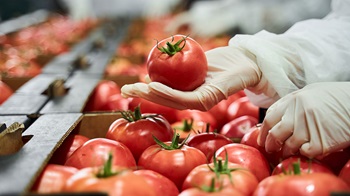Your Supplier, Your Risk
By Colin Christmas, Managing Director, EAGLE Certification Group
 Recently at the SQF Global event, I teamed up with Kendra Lunt, Technical Services Director, Reichel Foods, Inc., and we discussed risks in food safety with supplier partners. This year, I have served as the managing director at Eagle Certification Group, and previously I had a 20-year career at Nestlé. My last role at Nestlé was Director of Supplier Management & Improvement.
Recently at the SQF Global event, I teamed up with Kendra Lunt, Technical Services Director, Reichel Foods, Inc., and we discussed risks in food safety with supplier partners. This year, I have served as the managing director at Eagle Certification Group, and previously I had a 20-year career at Nestlé. My last role at Nestlé was Director of Supplier Management & Improvement.
Kendra and I teamed up for this talk because it’s such an important area to evaluate with touchpoints all the way through a company. Risks to food safety – and your bottom line – are found at all points along your supply chain. Selecting a supplier is more than identifying the lowest cost provider. It’s about making informed risk-based sourcing decisions that can decrease non-quality cost, lower the potential for withdrawals and recalls, and better assure the safety of your product.
We started our discussion by agreeing that the supplier manager has to be really good at making friends in an organization. And why is that? The reason is that supply management is a unique role that goes through the whole end-to-end of a supply chain. And it touches so many functions in different departments that it’s really important to have good connections in the organization who will think through risks with you and for you as operational changes are made. By that, we mean that ultimately, people need to know who you are. Whether it’s the procurement function, R&D, marketing, or operations, all these different functions play their part in terms of understanding supply management, and it’s your role to make sure that you fit nicely with those functions. Ultimately, the alignment of objectives is very, very important in an organization.
Using tools such as risk matrices, historical data, monitoring systems, and specifications, the supplier management team has to know how to identify the total supply chain partners, including service providers, logistics, temporary personnel, and others beyond just raw materials and recognize and mitigate the risks they may pose. The importance of operational reviews of suppliers’ performance is key.
Kendra and I spoke about the steps to bringing on new suppliers, reviewing the food safety information on their website, and placing Google alerts to track performance and learn about incidents. So you’re tracking the performance, what kind of issues and history there are with that ingredient in particular FDA has a really great free database that will tell you all about the suppliers’ regulatory history.
There are a number of different aspects to consider in evaluating an ingredient, such as changes in the forecasted volume for the ingredient, changes into the brands it will be added to, and changes to who the consumer is, whether it be adult, infant, elderly nutrition or for pet food.
If you would like to listen to the full conversation, the SQF Global content is accessible through a November All Access Pass, which includes all the SQF Global content, including this talk and the SQF Edition 9 Conversion Primer recording. See more information at sqfi.com.
Recent Blog Posts
Ensuring the safety and integrity of stored and distributed food products is paramount to every operation.
Pollinators, both insects and animals, are a critical link in our sustainable food system. According to the USDA about one-third of crops produced globally rely on insect or animal pollinators.
Implementing sustainable agriculture practices, including integrated pest management (IPM) and pollinator protection, is crucial...




